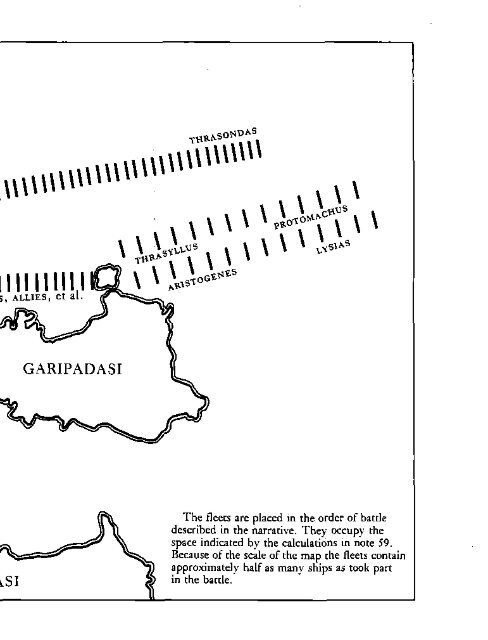The Fall of the Athenian Empire-(A New History of the Peloponnesian War) Donald Kagan - (1987)
MACEDONIA is GREECE and will always be GREECE- (if they are desperate to steal a name, Monkeydonkeys suits them just fine) ΚΑΤΩ Η ΣΥΓΚΥΒΕΡΝΗΣΗ ΤΩΝ ΠΡΟΔΟΤΩΝ!!! Strabo – “Geography” “There remain of Europe, first, Macedonia and the parts of Thrace that are contiguous to it and extend as far as Byzantium; secondly, Greece; and thirdly, the islands that are close by. Macedonia, of course, is a part of Greece, yet now, since I am following the nature and shape of the places geographically, I have decided to classify it apart from the rest of Greece and to join it with that part of Thrace which borders on it and extends as far as the mouth of the Euxine and the Propontis. Then, a little further on, Strabo mentions Cypsela and the Hebrus River, and also describes a sort of parallelogram in which the whole of Macedonia lies.” (Strab. 7.fragments.9) ΚΚΕ, ΚΝΕ, ΟΝΝΕΔ, ΑΓΟΡΑ,ΕΚΚΛΗΣΙΑ,ΝΕΑ,ΦΩΝΗ,ΦΕΚ,ΝΟΜΟΣ,LIFO,MACEDONIA, ALEXANDER, GREECE,IKEA
MACEDONIA is GREECE and will always be GREECE- (if they are desperate to steal a name, Monkeydonkeys suits them just fine)
ΚΑΤΩ Η ΣΥΓΚΥΒΕΡΝΗΣΗ ΤΩΝ ΠΡΟΔΟΤΩΝ!!!
Strabo – “Geography”
“There remain of Europe, first, Macedonia and the parts of Thrace that are contiguous to it and extend as far as Byzantium; secondly, Greece; and thirdly, the islands that are close by. Macedonia, of course, is a part of Greece, yet now, since I am following the nature and shape of the places geographically, I have decided to classify it apart from the rest of Greece and to join it with that part of Thrace which borders on it and extends as far as the mouth of the Euxine and the Propontis. Then, a little further on, Strabo mentions Cypsela and the Hebrus River, and also describes a sort of parallelogram in which the whole of Macedonia lies.”
(Strab. 7.fragments.9)
ΚΚΕ, ΚΝΕ, ΟΝΝΕΔ, ΑΓΟΡΑ,ΕΚΚΛΗΣΙΑ,ΝΕΑ,ΦΩΝΗ,ΦΕΚ,ΝΟΜΟΣ,LIFO,MACEDONIA, ALEXANDER, GREECE,IKEA
Create successful ePaper yourself
Turn your PDF publications into a flip-book with our unique Google optimized e-Paper software.
THE BATTLE OF ARGINUSAE 34 7<br />
case, <strong>the</strong>y could have ignored <strong>the</strong> diekplous and, with <strong>the</strong>ir superior<br />
skill, easily could have attacked <strong>the</strong> A<strong>the</strong>nians in <strong>the</strong> flank and rear.<br />
With such an advantage, it is hard to see how <strong>the</strong>y could have lost <strong>the</strong><br />
battle, much less suffer <strong>the</strong> terrible disaster <strong>the</strong>y encountered.<br />
With <strong>the</strong> double gap, however, <strong>the</strong> A<strong>the</strong>nian line covered <strong>the</strong> space<br />
normally occupied by I 55 ships in line abreast, overlapping <strong>the</strong> enemy<br />
by at least 16 or I 7 ships at each end." In such a position, with <strong>the</strong><br />
double lines protecting <strong>the</strong>ir wings and <strong>the</strong> island <strong>the</strong>ir center against<br />
<strong>the</strong> diekplous, and <strong>the</strong> length <strong>of</strong> <strong>the</strong>ir own line preventing <strong>the</strong> enemy's<br />
periplous, <strong>the</strong> A<strong>the</strong>nians were in good order to avoid undue harm to<br />
<strong>the</strong>mselves and to do great damage to <strong>the</strong>ir enemies." <strong>The</strong> A<strong>the</strong>nians'<br />
division <strong>of</strong> <strong>the</strong>ir wings into eight independent units, moreover, each<br />
under its own commander and able to act separately from <strong>the</strong> rest,<br />
allowed <strong>the</strong>m to take <strong>the</strong> <strong>of</strong>fensive with safety. Xenophon gives us <strong>the</strong><br />
clue that shows how <strong>the</strong>y proceeded. As Callicratidas came toward<br />
<strong>the</strong>m, "<strong>the</strong> A<strong>the</strong>nians came out against him, extending <strong>the</strong>ir left wing<br />
out towards <strong>the</strong> open sea."" Since <strong>the</strong> wings already outflanked <strong>the</strong><br />
Spartan fleet, <strong>the</strong> looping movement to <strong>the</strong> left was even more threatening<br />
to <strong>the</strong> Spartan right, for unless it were met, it might circle behind<br />
72<br />
1f <strong>the</strong>y lined up away from <strong>the</strong> center, using <strong>the</strong> entire island as a way <strong>of</strong> extending<br />
<strong>the</strong>ir line, as suggested inn. 70, above, <strong>the</strong>ir advantage would have been even greater.<br />
7 J Apart from <strong>the</strong> argument just given, <strong>the</strong>re are three pieces <strong>of</strong> evidence that tend<br />
to support <strong>the</strong> suggested alignment. Diodorus (1].98.4) tells us that <strong>the</strong> A<strong>the</strong>nians<br />
included <strong>the</strong> islands in <strong>the</strong>ir battle order, "being eager to extend <strong>the</strong>ir line <strong>of</strong> ships as<br />
far as possible" (O"'JT€11Bwv On 1T~EW7ov 11'0.pEK7ECvm 'TiXIi va~). <strong>The</strong> arrangement<br />
suggested here seems to suit that purpose well, while o<strong>the</strong>rs do not. <strong>The</strong> second evidence<br />
comes from Xenophon's report <strong>of</strong> Hermon's warning to Callicratidas, when <strong>the</strong> Spartans<br />
came close enough to see <strong>the</strong> A<strong>the</strong>nians' numerical superiority (1.6.p). If <strong>the</strong><br />
A<strong>the</strong>.nians were separated by <strong>the</strong> usual distance, <strong>the</strong>y would have been outflanked, as<br />
we have seen. It is hard to see how Hermon could have determined that <strong>the</strong> A<strong>the</strong>nians<br />
were superior in numbers in that formation. Nothing, however, could have been easier<br />
than to see that <strong>the</strong> Spartans were numerically inferior when <strong>the</strong>y were outflanked.<br />
<strong>The</strong> most direct and powerful evidence in favor <strong>of</strong> this reconstruction is ano<strong>the</strong>r passage<br />
in Diodorus (q.98.4), which tells us that Callicratidas "was unable to make his line<br />
equal to <strong>the</strong> enemy's because <strong>the</strong> islands took up too much space" (00 8uv6:J.LEVOcrm mt

















